Outsourcing to Czechia

How much does it cost to hire developers in Czechia?
Dec 2nd 25 - by Devico Team
Find out how much it costs to hire software developers in Czechia in 2025. Compare hourly rates, roles, and factors that impact pricing.
Hire
Hire by role
Hire Front-end developers
Hire Back-end developers
Hire Full-stack developers
Hire Android developers
Hire iOS developers
Hire Mobile developers
Hire AI engineers
Hire ML engineers
Hire Automation QA engineers
Hire Blockchain developers
Hire Data engineers
Hire Cloud engineers
Hire by skill
Hire JavaScript developers
Hire TypeScript developers
Hire Ruby on Rails developers
Hire React Native developers
Hire Flutter developers
Hire Golang developers
Hire React.js developers
Hire Python developers
Hire PHP developers
Hire .NET developers
Hire Java developers
Hire Laravel developers

API development
December 19, 2024 - by Devico Team
Summarize with:
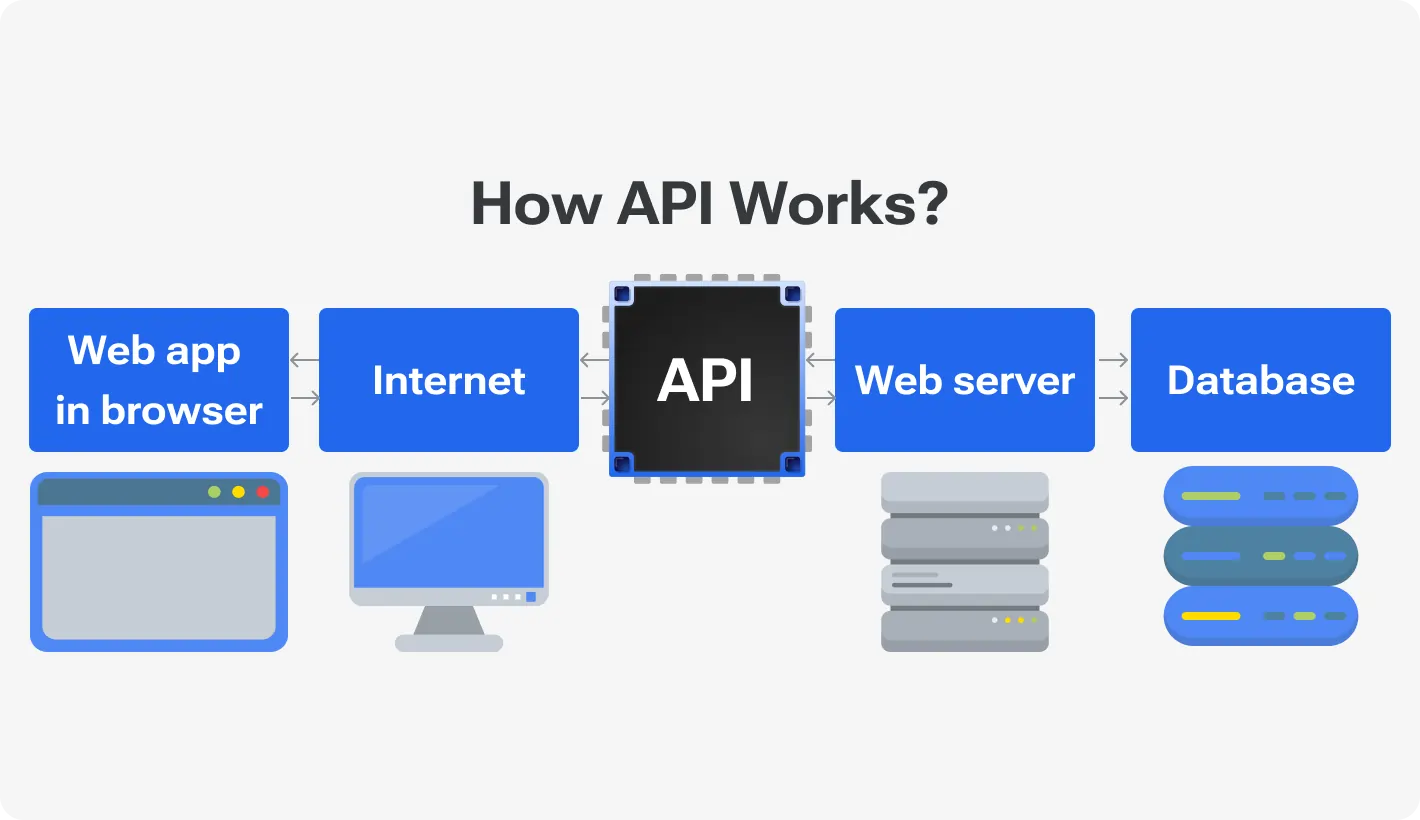
According to Cloudflare, APIs now account for approximately 57% of all internet traffic, underscoring their use across industries for various purposes. The popularity of API keeps growing as there is no other way to build bridges between different platforms and applications as fast, comprehensive, and seamless as an API. Therefore, we will acquaint you with the nature of API, its types, benefits for the visibility of your business on a global scale, and the most popular examples of successful API use.
An Application Programming Interface, or API, in short, is an indispensable tool for web-based platforms to communicate and exchange information with one another. APIs are the fastest way for different systems to connect and understand each other’s code, overcoming all the possible technical obstacles on the way. Only GitHub holds over 200 million API repositories, demonstrating the engagement of web developers all around the world in APIs and their usage to build links between multiple platforms or applications at once.
How exactly do APIs work? In simple terms, every API is built on the concept of requests and responses: when you send a request to an API, it sends back a response, usually in a standard format like JSON or XML, containing the data or confirmation of the action requested. Then, you use the information received with the response in order to embed a feature or a tool you have in mind into a target website or application.
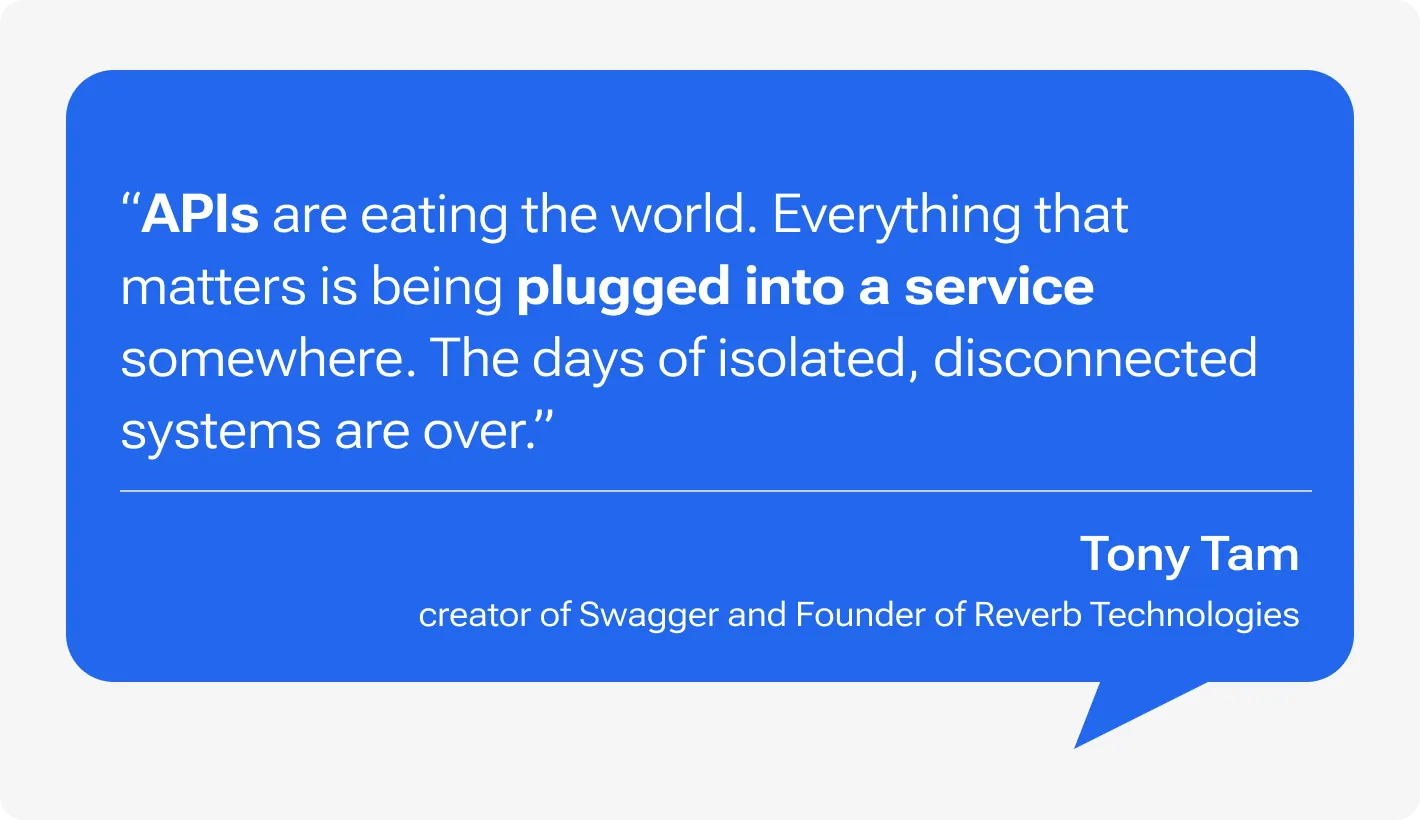
For example, you want to build a platform that shows the latest updates of an X (formerly Twitter) feed on a certain topic. Instead of constantly updating the page yourself, you can just connect the platform to the X API. In essence, you are sending the request and getting a response in return. A good analogy would be spelling out your order to a waiter in a restaurant (request): the waiter delivers your order to the kitchen, and you get your food (response).
APIs demystified: Simplifying complex connections
There are many different types of APIs, and each type has its own functions designed to serve a particular purpose. Consequently, the range of things you can develop using an API becomes almost inexhaustible. The current roster of APIs available for development and integration includes Open APIs, Partner APIs, Internal APIs, Composite APIs, and GraphQL APIs. Below, you will find more information and case studies for different kinds of APIs.
Open APIs (Public APIs)
Used to enable external developers to build integrations, apps, or services.
Fully open to all developers and third parties.
Twitter API, Google Maps API, OpenWeatherMap API
Partner APIs
Used to facilitate business-to-business (B2B) relationships, allowing integration between companies.
Restricted access; only available to specific partners.
APIs provided by payment processors (e.g., Stripe API for specific partners), travel aggregators working with airlines and hotels.
Internal APIs (Private APIs)
Used to improve internal processes, facilitate communication between internal systems.
Limited to internal use; not exposed to external users.
APIs for internal data access, company-specific tools, or internal microservices architecture.
Composite APIs
Used to optimize network requests, especially when multiple API calls are needed for a single task.
Varies (can be open, partner, or internal).
Composite endpoints for getting user data from multiple services, such as user profile, order history, and recommendations in one call.
GraphQL APIs
Used to efficiently retrieve data by allowing clients to specify the exact data needed, reducing over-fetching or under-fetching of data.
Typically open or partner-based; requires GraphQL client-side support.
GitHub GraphQL API, Shopify GraphQL API.
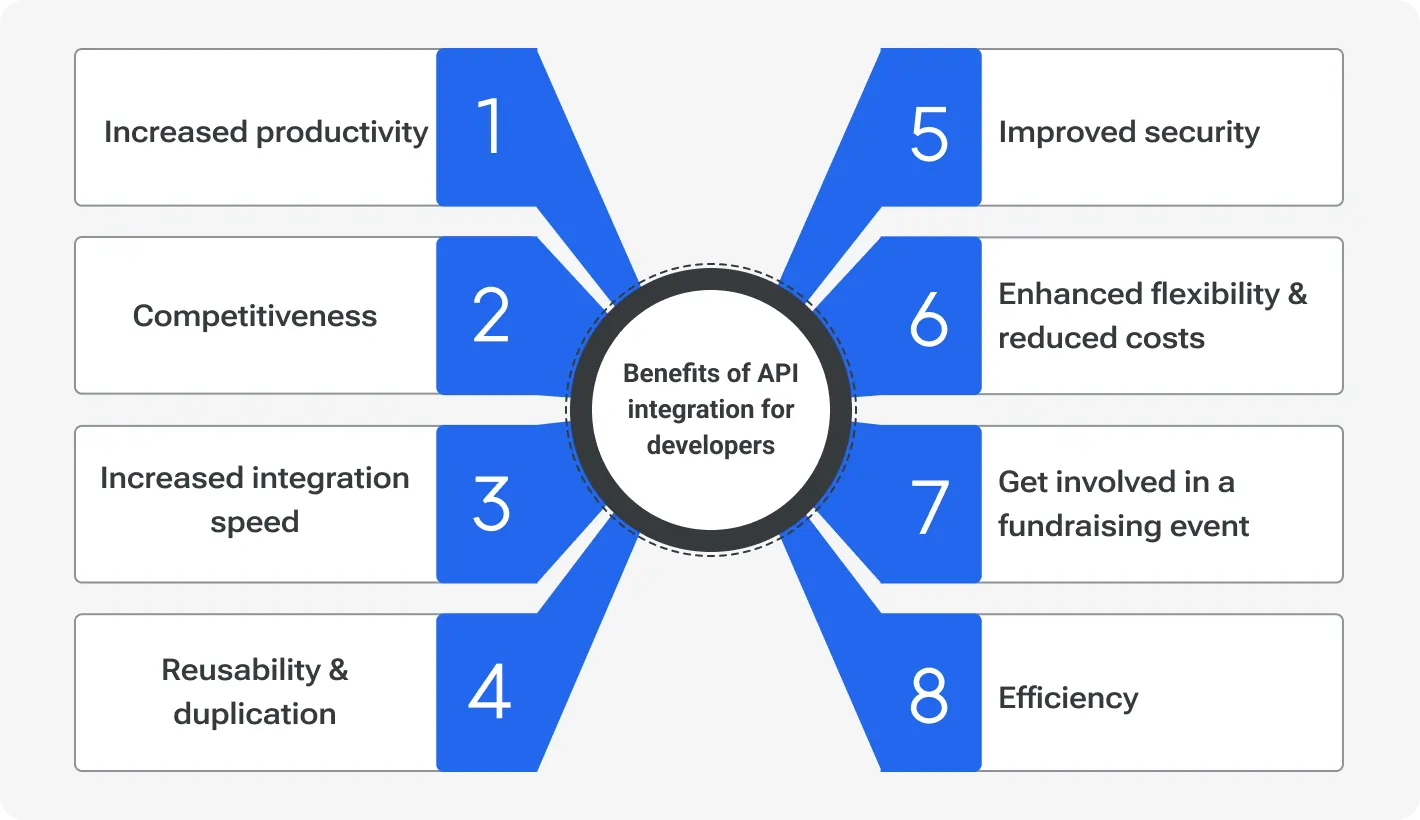
What makes an API a superior tool in web development? For starters, APIs enable different systems and applications to communicate and work together for the exchange of information, advertising, payment, and many other purposes. Secondly, they streamline the processes for clients, reducing the time and effort otherwise needed to develop a similar interaction between different sources single-handedly.
APIs also facilitate the scalability of different platforms and applications, allowing for seamless user integrations. Finally, APIs create room for creativity for web developers, helping them generate ideas based on already existing platforms, and combining their innovative features to create new websites and applications.
The more detailed benefits of APIs include:
Ease of integration and use. According to the Slashdata Developer Economics Survey 19th edition, nearly 90% of developers are using APIs in some capacity, 84% of businesses use APIs. Such popularity of API proves that it is not so difficult to set up and use but the benefits are hard to overestimate.
Prospects of growth. The global API economy is expected to reach $267 billion by 2025, which means that now is the best time to invest in and build your business’s native API.
Profitability boost. Businesses that use APIs are 24% more likely to be profitable than those that don't. Similarly, APIs can help businesses reduce costs by 15%.
Attractiveness to customers. Given that they greatly facilitate otherwise tedious processes for website and app users, APIs can help businesses improve customer satisfaction by 20%.
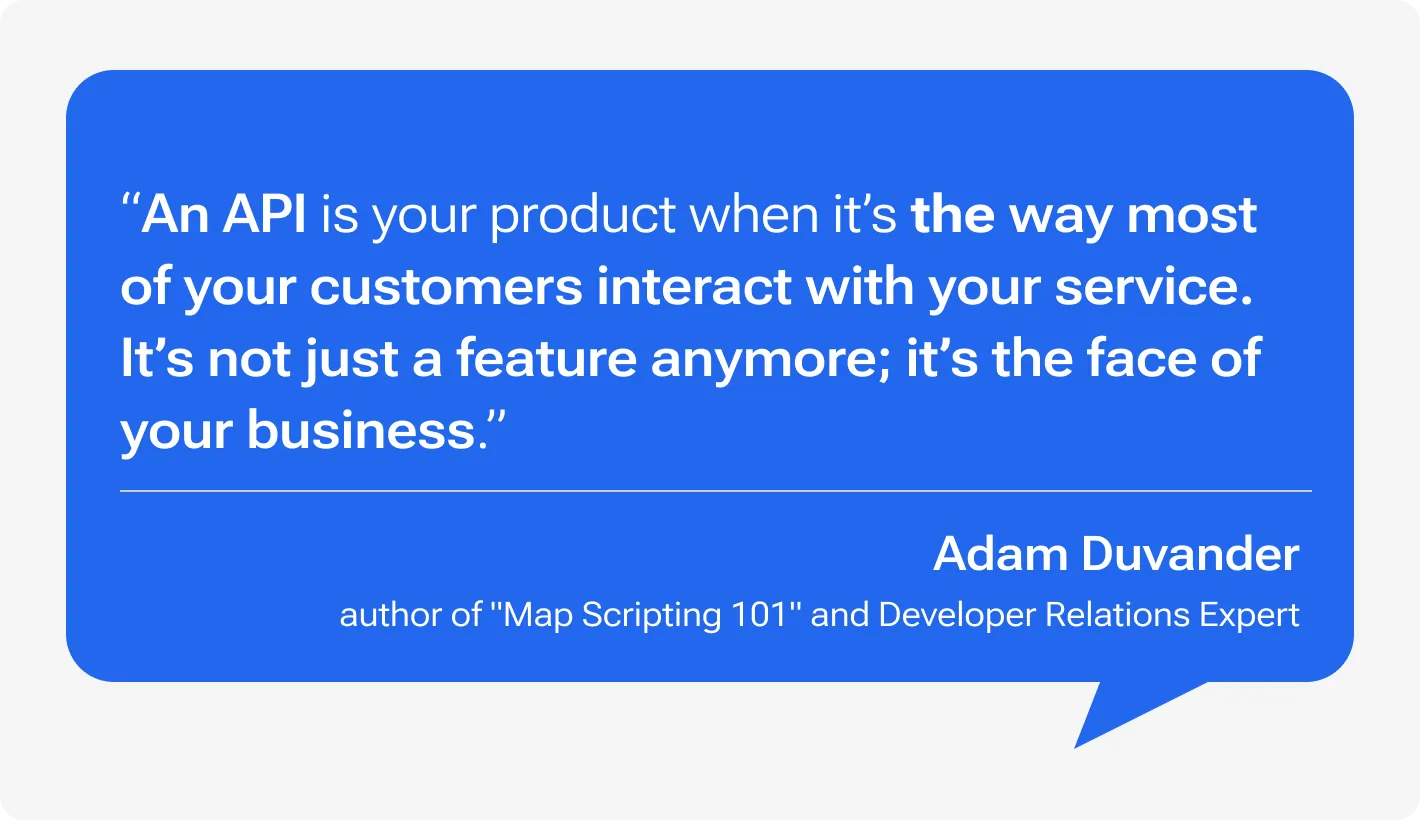
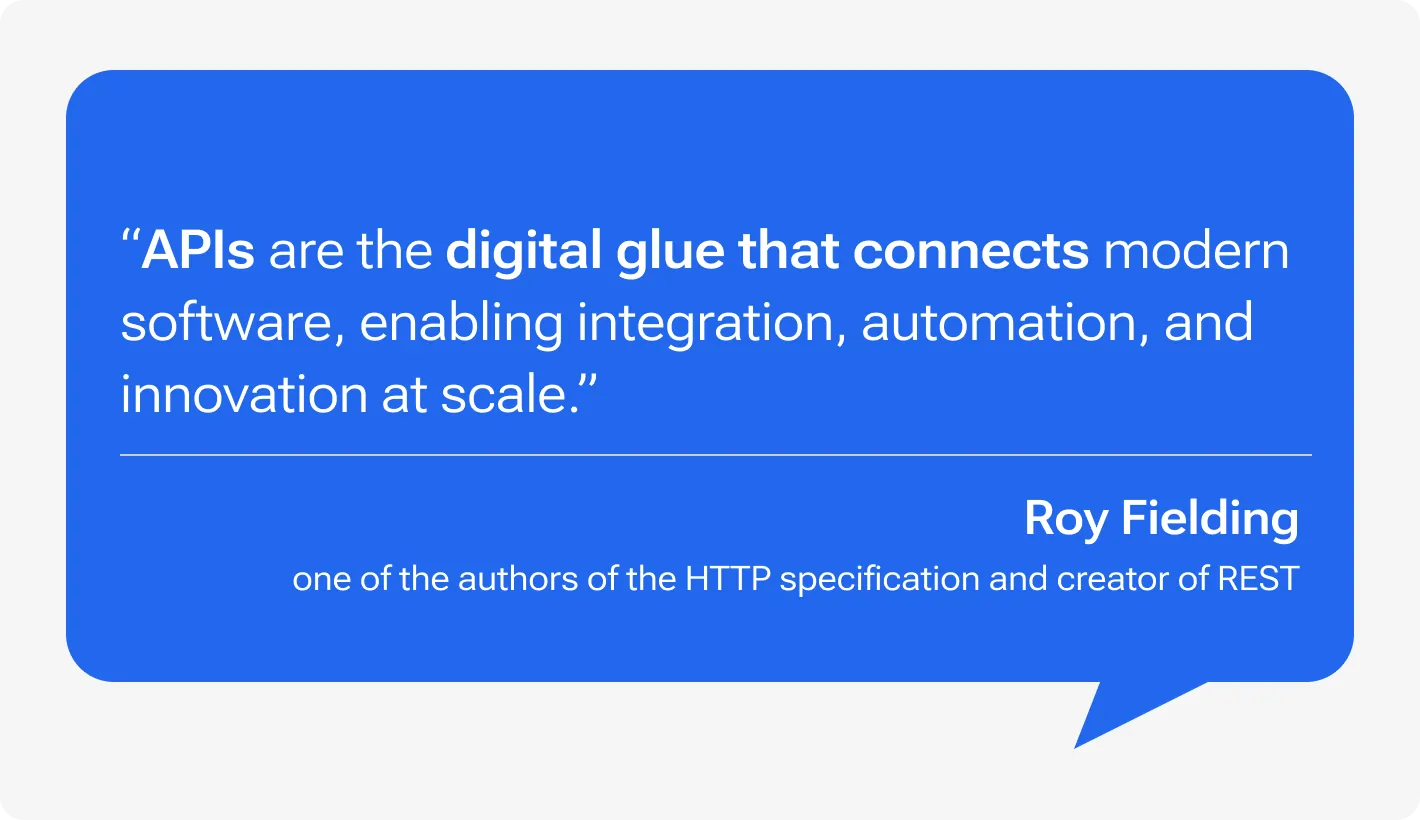
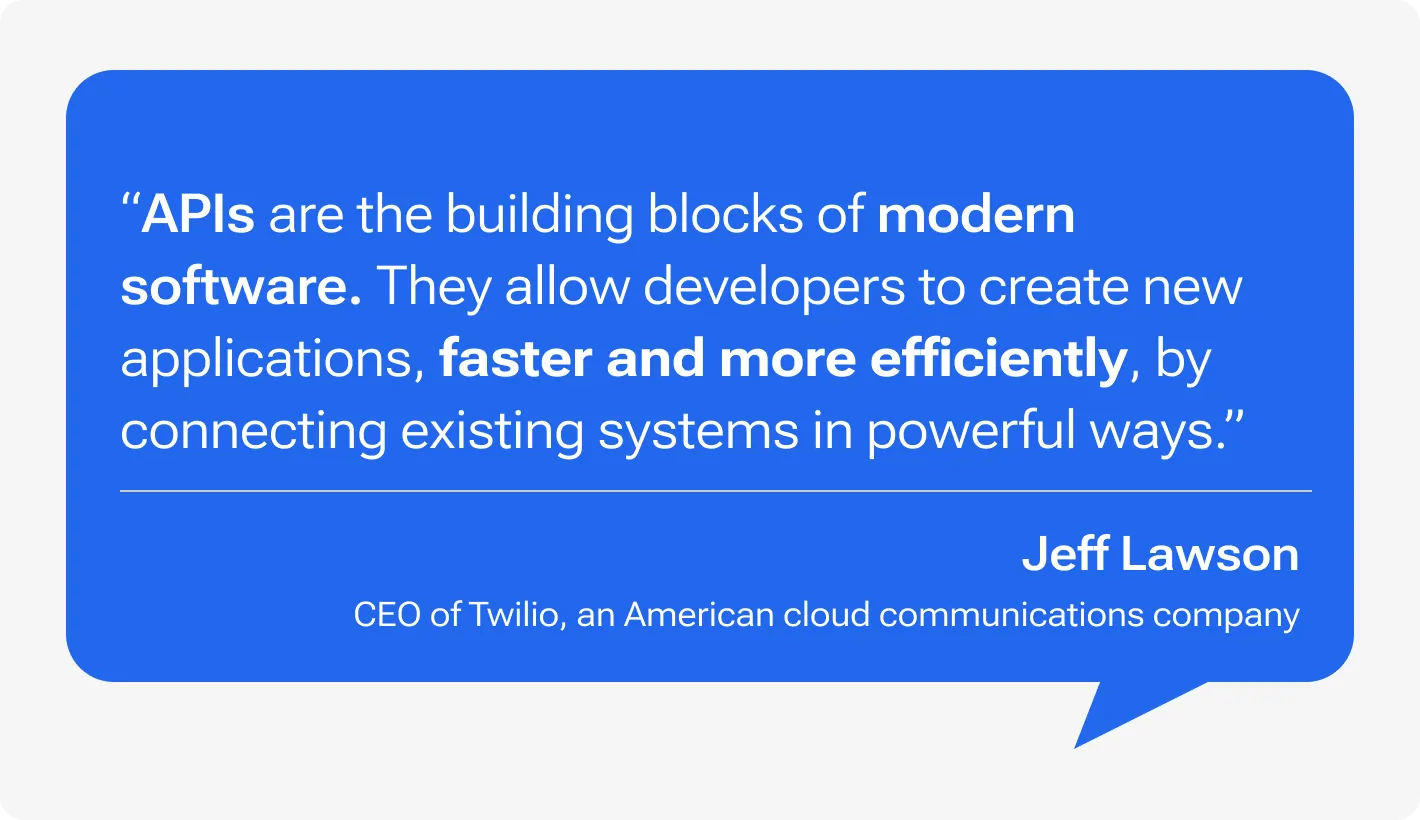
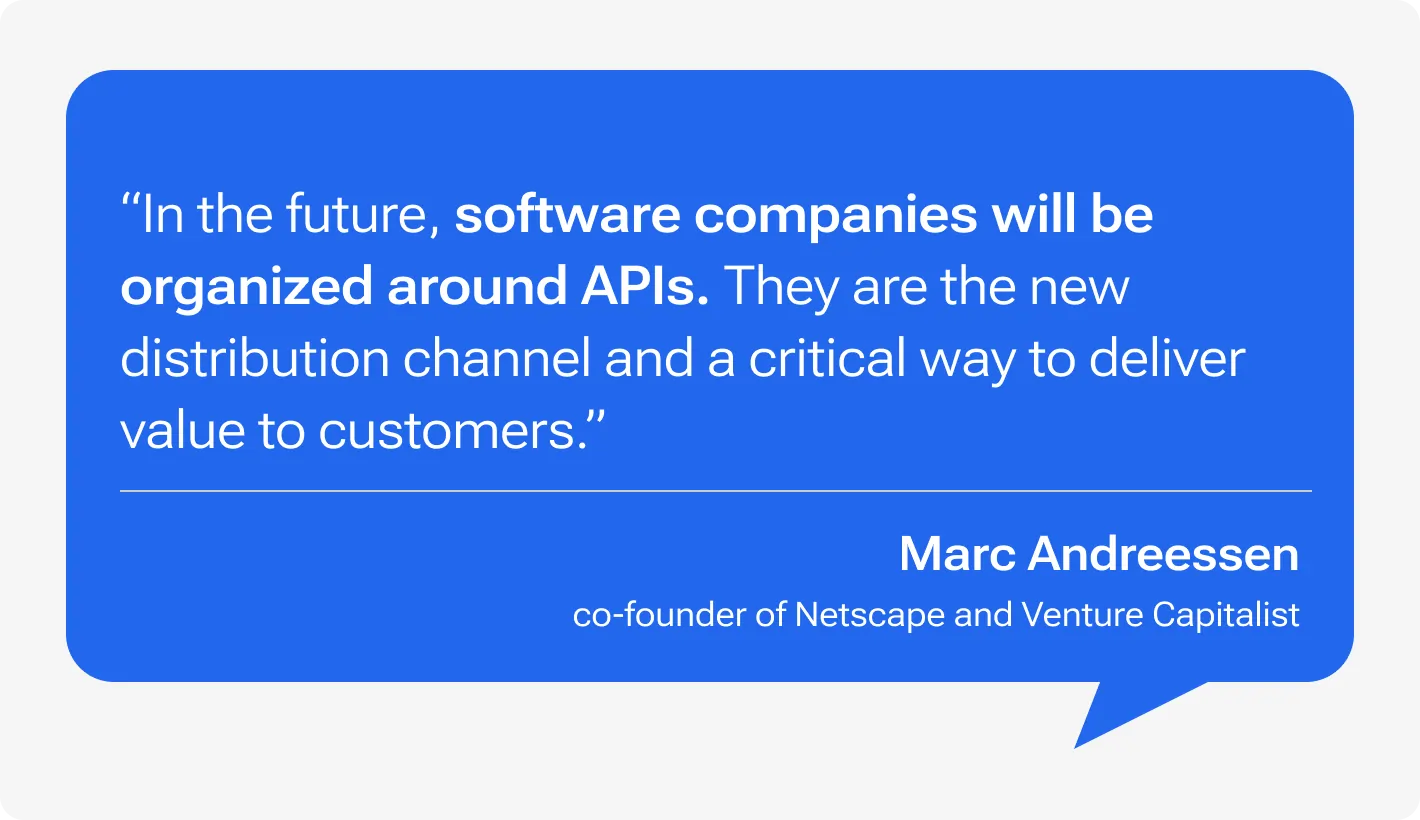
You can spot and use APIs on almost every website or in every application you interact with. Sometimes, you interact with an API without even noticing it. The case studies of successful API use are everywhere, and below, we are going to provide the most widespread examples for a more profound understanding of different types of APIs and their effectiveness.
Top API development trends you can’t afford to ignore
The first thing that comes to mind when we think about API examples is social media integration. Perhaps the most illustrative would be a news platform like Bloomberg or The New York Times, where Twitter feeds pop up in news articles quite often, either to demonstrate a point or dwell on a particular subtopic. In order to integrate a tweet or a feed on a particular topic or with a particular hashtag into a news page, an integration of a Twitter API is needed. Web developers make a GET request to an API and receive information based on the request in order to parse and embed it into a website for further demonstration and use.
Whenever e-commerce websites, like EBay or Amazon, need to integrate payment methods like PayPal or Stripe into their platforms (practically all the time), an API comes to the rescue. The technical process is very similar to the one with social media integrations: after sending a request, developers get a response from the payment system’s API and embed the payment window with all attached functions into the corresponding page. This integration allows customers of an e-commerce website to finalize transactions and purchase goods or services directly within the page, without using multiple different websites to pay.
Mapping services or applications that use location also need APIs in order to function properly. Think of a private dental clinic website that embeds a map of its location into the web page so customers can find the address more easily. This example perfectly illustrates the use of a Google Maps API for location-based services: a map opens directly on the same web page, pointing out the exact location of the place of business for customers. In the same way, different mapping services can be integrated into one page at once: for instance, Google Maps and Apple Maps, and the customer gets to choose whichever one is more convenient for them.
Another extremely popular use case of an API is for retrieving data from multiple platforms at once. For instance, a gaming-themed platform collects data from Steam and other credible sources in order to illustrate statistics per game: how many players play it daily, weekly, monthly, and yearly; how many users have purchased it; how many users left positive or negative reviews, how highly different users rated one and the same game, and so on and so forth. Collecting all this data manually would be tedious at least, henceforth an API for data retrieval is an indispensable tool for platforms displaying statistics.
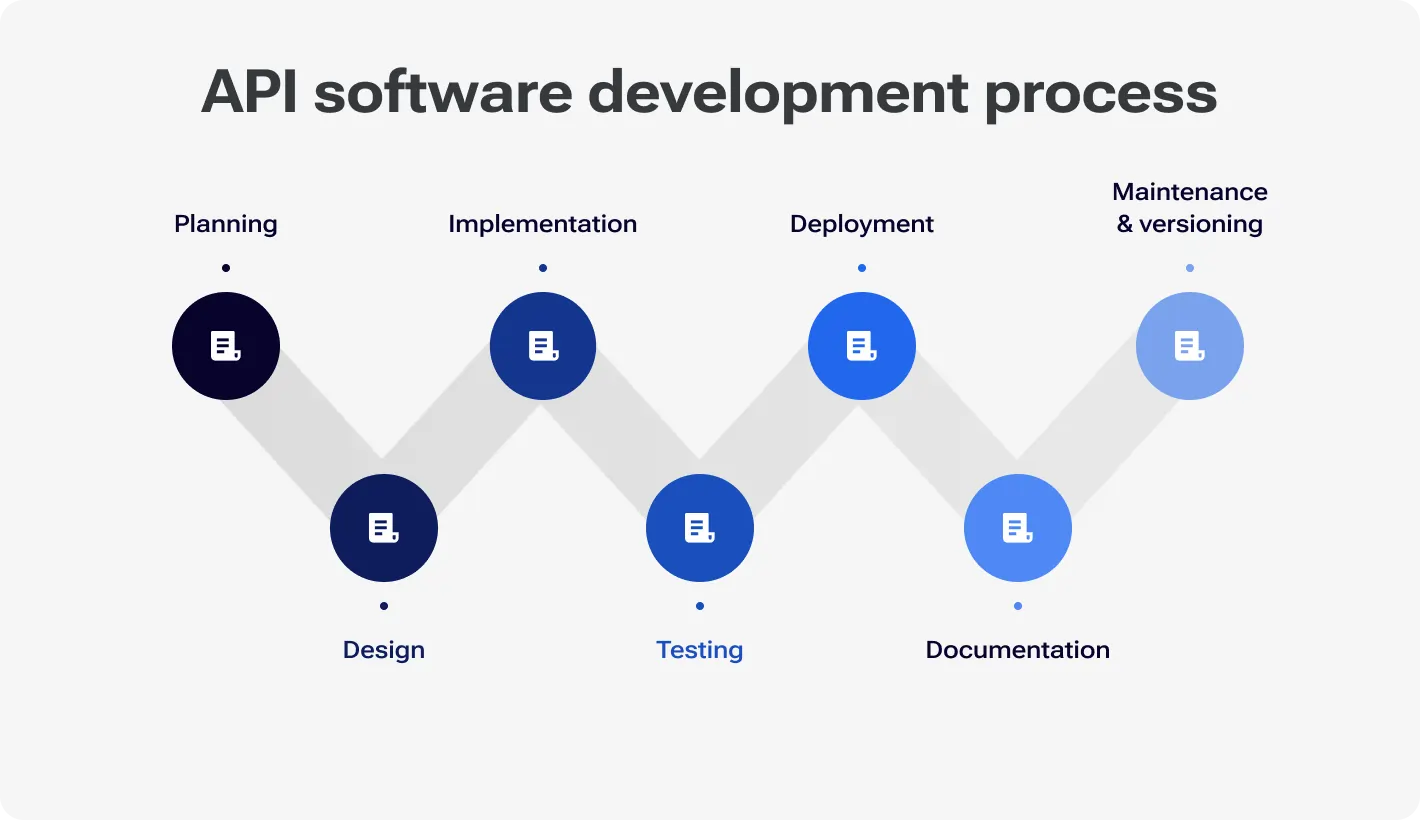
As you can see, API integration is a valuable tool that can boost various aspects of your business. In order to get started with API development, however, you need to analyze the market and prepare your platform properly. If you are a business offer - hire a skilled web developer with previous experience working with API integration. If you are a developer but have never worked with APIs - properly study the types, functions, and integration process for every existing kind of API. The steps below will be of help for both sides.
Checklist for API development success
For starters, you must assess the current needs of a business in order to properly define the most fitting type of API that can solve all the issues at hand in a seamless and fast way.
Then, list the criteria that will help you choose the appropriate API type to solve your question. For this, answer such questions as does your API need to solve issues for customers, for the business itself, between your business and other businesses, or between your business and its partners?
Once the purpose and API type are defined, you can proceed to the implementation steps.
Registering for API access. To begin with, you need to register with an API by providing such information as your email address, password, and possibly some personal or company information.
Obtaining API keys. Once you register your platform or application for an API, you will get the API keys, which are unique identifiers used to authenticate requests to an API. Even for open (public) APIs, despite their public access and straightforwardness, API keys might be needed depending on their specifics.
Making API calls. As soon as you are registered and your API keys are intact, you can start sending API calls for integration.
Handling responses and errors. The job doesn’t end here since after receiving a response, you need to guide it to work in the way you designed and deal with some possible technical issues that can appear in the process.
Using an API is a streamlined process that is secure on many levels. Even if you as a business owner or a web developer have little to no experience with API, as long as you stick to the instructions, the implementation process will be a breeze. It is also crucial to stick to the best practices when in any way interacting with an API.
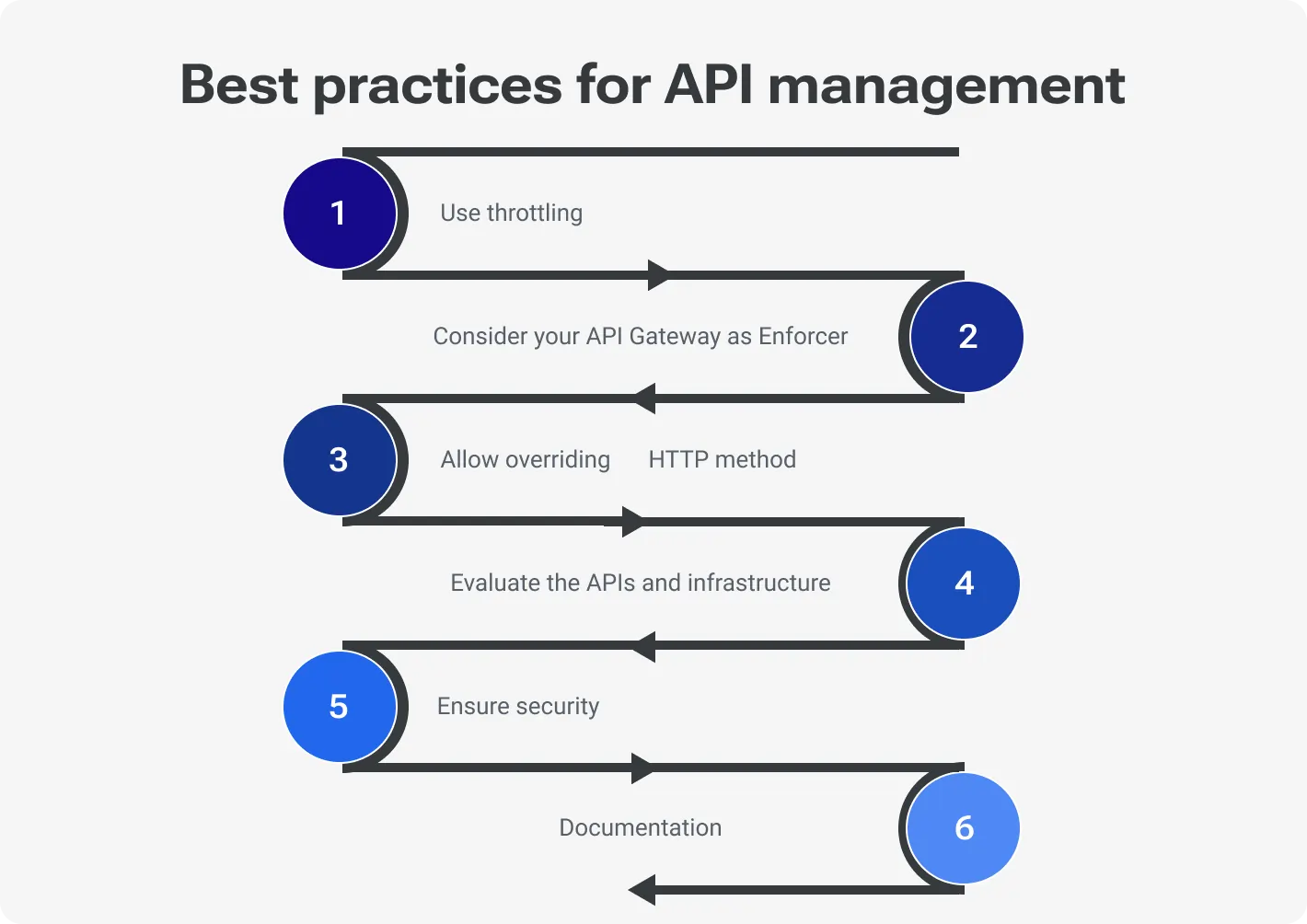
Remember to stick to safe practices when using any type of API, be it open APIs, internal APIs, partner APIs, or any others. These practices aim to ensure the security of any data shared with an API and are recommended whether you are interacting with someone else’s API or developing your own.
Use authentication: do not neglect API keys and use unique keys for every platform and application you’re interacting with. Also, avoid hardcoding them in your source code.
Secure your endpoints: use HTTPS to encrypt data transmitted between the client and server, use rate limiting to protect against DDoS attacks, and validate all input data to prevent breaches in security.
Use encryption: encrypt all the sensitive data and avoid disclosing any unnecessary information that is not needed directly for the functioning of the API.
Monitor API usage: regularly check the API usage and automatize security checks to prevent unauthorized access.
Develop security practices: regularly verify the API’s code for any anomalies or errors. Perform regular security testing.
Keep API documentation: don’t forget to document the details of an API, as well as clear instructions for customers in order to use the API safely and efficiently.
Security policies: establish clear and detailed security policies and possible sanctions for their breach by any of the parties using the API.
Choosing the right API development partner: What to look for
By sticking to these practices, it is feasible to ensure that the interaction with any API goes smoothly and brings exactly the results that are respected. In the face of endless possibilities that have opened to developers with the creation of API, the security of any personal or company data comes first. Henceforth, there is no such thing as being too careful when using any powerful tool, including an API.
APIs are becoming increasingly popular, driving the ongoing evolution and enhancement of existing API types. As more businesses and developers embrace API integration, the seamless interaction between companies and their clients is becoming a cornerstone of modern digital infrastructure.
With APIs now at the forefront of technological innovation, there's no better time to explore their potential in your own projects. By partnering with Devico, you can leverage expert API development and integration services to help shape the future of web development, making it more transparent, efficient, and user-friendly. Together, we can turn your vision into reality.
Outsourcing to Czechia

Dec 2nd 25 - by Devico Team
Find out how much it costs to hire software developers in Czechia in 2025. Compare hourly rates, roles, and factors that impact pricing.
Outsourcing to Czechia

Nov 25th 25 - by Devico Team
Compare Czechia and Poland for software outsourcing in 2025. Discover costs, talent, infrastructure, and which country fits your project best.
Outsourcing to Czechia

Nov 18th 25 - by Devico Team
A complete guide to outsourcing software projects to Czechia, learn about costs, talent, benefits, and how to build successful partnerships in 2025.